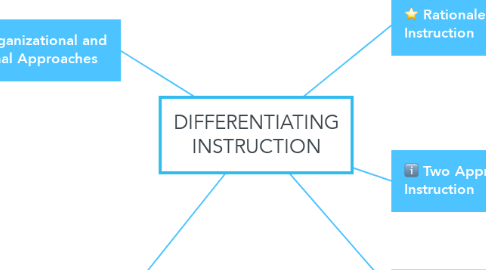DIFFERENTIATING INSTRUCTION
by Paula Stephen


1. The Organizational and Instructional Approaches
1.1. Instructional Formats
1.2. Instructional Arrangements
1.3. Instructional Strategies
1.4. Social and Physical Environment (or Classroom Climate)
1.5. Co-teaching approaches
1.5.1. Supportive Co-Teaching
1.5.2. Parallel Co-Teaching
1.5.3. Complementary Co-Teaching
1.5.4. Team Co-Teaching
2. Two Approaches to Differentiated Instruction
2.1. Retrofitting
2.2. Universal Design for Learning
3. Design or Decision Points when Planning Lessons
3.1. Gathering facts about the learners
3.1.1. Project specifications
3.1.2. End User requirements
3.1.3. Action points sign-off
3.2. Differentiating content and materials
3.3. Differentiating products and materials
3.3.1. Top Priorities
3.3.2. Medium Priorities
3.3.3. Low Priorities
3.4. Differentiating the processes of learning
3.4.1. Top Priorities
3.4.2. Medium Priorities
3.4.3. Low Priorities
4. Access Design Points
4.1. Content
4.1.1. Materials
4.1.2. Personnel
4.1.3. Services
4.1.4. Duration

